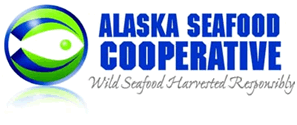undercurrentnews.com, August 11, 2015
By Jeanine Stewart
The O’Hara Corporation christened the first new vessel to join Alaska’s flatfish sector in nearly three decades this summer, marking a major milestone for the aging fleet and sending waves of excitement through the industry.
A video posted on the company’s Facebook page shows the hull of the new vessel — named the Araho — being launched into the water, in time for completion by the Alaska Bering Sea and Aleutian Islands flatfish fishing season’s start in late January. In a rare move, the company had it built on US soil. Eastern Shipbuilding Group constructed the 194-foot freezer trawler at its home-base in Panama City, Florida.
“This is the culmination of years of effort, and I am thrilled that the first one is in the water,” Chris Woodley, executive director of the Groundfish Forum, told Undercurrent News, adding that further signs of progress are coming with another long-overdue addition of a new vessel for Amendment 80 company Fishermen’s Finest. “Our fleet is old, and while our vessels are extremely safe due to their participation with the Coast Guard’s Alternate Compliance and Safety Agreement, it is time to get new steel on the water.”
The Amendment 80 fleet – which catches flatfish such as cod, yellowfin sole, Alaska plaice and a myriad of other whitefish in the Bering Sea and Aleutian Islands – had no legal mechanism to replace old vessels until the passage of Amendment 97 in 2012.
“When Amendment 80 was implemented [in 2008], there were no regulations for how you could replace your vessels, and at the time they were looking at the reduction program that Congress passed…it only talked about who was eligible to be in the sector,” John McCracken, economist for the North Pacific Fishery Management Council (NPFMC), told Undercurrent.
The Araho boasts far more advanced technologies and efficiencies than those seen on O’Hara’s other Amendment 80 boats, the Constellation, built in 1981 and retrofitted in 1987; the Defender, built in 1984; and the Enterprise, built in 1983.
“Our boats are 35 years old or so, and these boats do not last forever, and the technology has changed,” Frank O’Hara, owner and vice president of the company, told Undercurrent.
According to NPFMC documentation, the most recently-built Amendment 80 vessel was Rebecca Irene in 1986. Before that came the Ocean Peace and the Defender in 1984, and 60% —15 out of the 25 — of the Amendment 80 vessels were built in the 1970s or earlier.
The Araho has 850 metric tons of fish holding capacity, up from 250t on its other boats, allowing the company to catch more fish per trip and save on fuel. It also has 54 bunks for crew members, up from 32 for its older boats, and provides more showers and bathrooms per person.
O’Hara had originally hoped to catch more fish with the addition of this vessel when the flatfish sector season starts in late January of next year, but the plan may be derailed with the NPFMC’s recent passage of a 25% cut to the halibut bycatch allocation for the Amendment 80 fleet.
“So we don’t know what is going to happen,” O’Hara said. The company plans to use all four boats the coming year, in an effort to avoid halibut bycatch as best it can.
“We’re going to catch the least amount of halibut and cod that we can with it,” he said.

